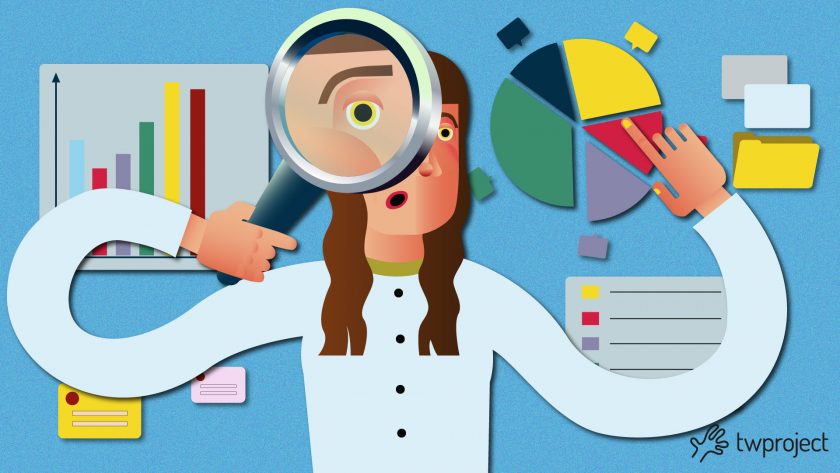The project risk analysis or risk management, is the process of risk identification, analysis and response to any risk that occurs during the life cycle of a project.
Analyzing the risks that may lie behind the execution of a project, predicting the possible obstacles and having a vision of the solutions in advance is certainly vital for any project.
It serves to help the latter stay on track and reach his goal.
CONTENT INDEX
But risk management can not and must not be just an action in response to something.
It should itself be part of the project planning process, in its evaluation phase.
In fact, during the planning of the project, the potential risks should be assessed and, obviously, also the possible solutions in order to manage these risks should be evaluated.
But what does “risk” mean?
A risk is anything that could potentially affect the timing, performance or budget of the project.
Risks are considered as potentialities and, in a project management context, if they become reality, they are classified as “problems“, which must be addressed accordingly.
Thus, risk management is the process of identification, categorization, prioritization and risk planning before they become problems.
Risk management can be managed differently depending on the project and its scope.
If it is a large-scale project, for example, risk management strategies could include detailed planning for each risk.
This is to ensure that mitigation strategies are activated in case of problems.
For smaller projects, risk management could mean a simple and prioritized list of high, medium and low priority risks.
Project risk analysis: How to identify risk
To begin with, a clear and precise definition of what the project will have to produce, the objectives and the final results is essential.
In this way the risks can be identified at every stage of the project, even with the help of the team members.
Some companies and industries develop risk control lists based on past project experience.
The team’s past experience, the project experience within the company and industry experts can be valuable resources to identify potential risks on a project.

Identifying the sources of risk by category is a possible method to explore the potential risk of a project.
Some examples of categories for potential risks include the following:
- Technology;
- Costs;
- Timing;
- Clients;
- Contracts;
- Financial situation;
- Political situation;
- Environmental situation;
- Persons.
Each defined risk must then be included in the risk monitoring model and marked by its priority
Consequently, a risk register that shows the impacts on the project, both negative and positive, must be created, as well as the actions to use and implement in order to manage the problem.
In the context of risk management, it is also important to maintain regular communication with the team throughout the project.
Transparency is fundamental, so that everyone knows what elements to take into account to recognize and react to a problem.
Project risk analysis: Risk assessment
After identifying potential risks, the project manager, with the help of the team, assesses the risk based on the probability of occurrence and the potential loss associated with the event.
Not all risks are the same.
Some risk events are more likely to happen than others, and even the cost of a risk can vary greatly.
It is essential that each new risk that emerges during the project is carefully evaluated according to its probability of occurrence and potential impact.
Therefore, evaluating the probability that the risk presents itself and the concrete repercussions on the project are the next step in the risk analysis.
Having criteria for determining high-impact risks can help narrow attention to certain specific and more critical risks to the project.
For example, suppose it is established that high-impact risks are those that could increase project costs by 5%.
Only a few potential risk events will satisfy this criterion.
These are therefore potential risk events on which the project team should focus on creating a mitigation plan.
The probability and impact of risk are both classified as high, medium or low.
A risk mitigation plan normally concerns events that have high results on both factors.
There is a positive correlation between the risk of the project and the complexity of the project.
In the case of highly complex projects, an external expert can be included in the risk assessment process and the risk assessment plan can take on a more prominent role in the project implementation plan.

Project risk analysis: Risk mitigation plan
After the risk has been identified and assessed, the project manager with the team develops a risk mitigation plan, a plan to reduce the impact of an unforeseen event.
The risk can be mitigated in the following ways:
- Risk avoidance: it usually involves the development of an alternative strategy with a greater probability of success, but usually linked to a higher cost;
- Sharing risk: involves collaboration with other stakeholders, in order to share responsibility for activities at risk;
- Risk reduction: it is an investment to reduce the risk on a project. For example, hire and rely on consultants to take care of high-risk activities;
- Risk transfer: it is a risk reduction method that shifts the risk from the project to another part. For example, the purchase of insurance on certain items is a method of transferring risk. In fact, the risk is transferred from the project to the insurance company.
Each of these mitigation techniques can be an effective tool to reduce individual risks and the overall risk profile of the project.
In project management, it is crucial to apply these techniques to effectively manage risks.
Using Twproject to manage risks
To simplify the risk management process, tools such as Twproject can be of great help.
Twproject allows project risks to be managed effectively; it enables the project manager and team members to follow the project in an organised manner, ensuring that everyone is informed of any risks and the mitigation strategies adopted.
It helps project managers to plan, monitor and control project activities efficiently.
- Advanced monitoring: allows you to follow the progress of the project in real time, promptly identifying any problems or delays.
- Customisation and flexibility: offers customisable tools that allow project managers to adapt the platform to the specific needs of the project, facilitating the management of activities and resources.
- Effective collaboration: facilitates communication between team members, improving information sharing and coordination of activities.
- Resource management: helps allocate resources optimally, avoiding overloads and ensuring that each team member knows exactly what his or her responsibilities are.
- Detailed reporting: generates reports that provide a complete view of the project status, helping project managers to make informed decisions.
As far as the project manager is concerned, not everyone conducts a formal risk assessment on the project.
The lack of formal risk management tools has also been seen as an obstacle to the implementation of a risk management plan.
In addition, the project manager’s personality and management style differentiate the approach to risk.
Some project managers are more proactive and will develop risk management programs for their projects.
Other managers are reactive and are more confident in their ability to handle unexpected events when they occur.
Others, on the other hand, are risk averse and prefer to be optimistic and not consider risks or avoid taking risks when possible.
Whatever the case, the ability to accurately analyze the risks of a project must fall within the skills and tasks of a project manager.
In any project, a proper risk assessment becomes fundamental to a successful plan.
What about you? What kind of project manager are you? How do you manage potential risks?
Tell us about your experience.




